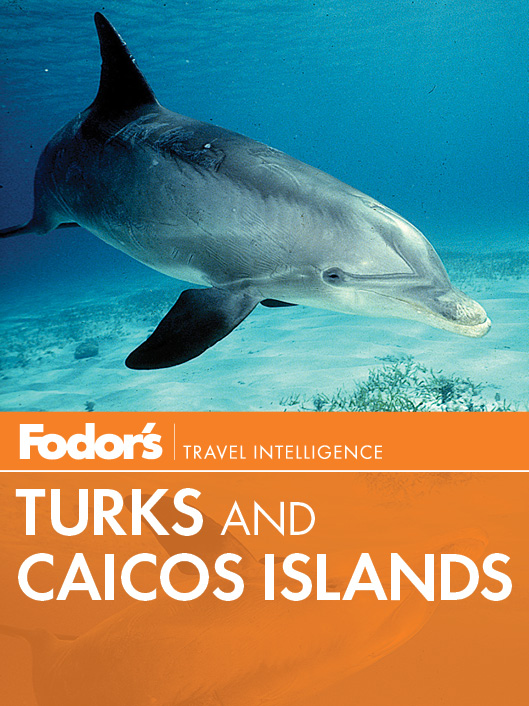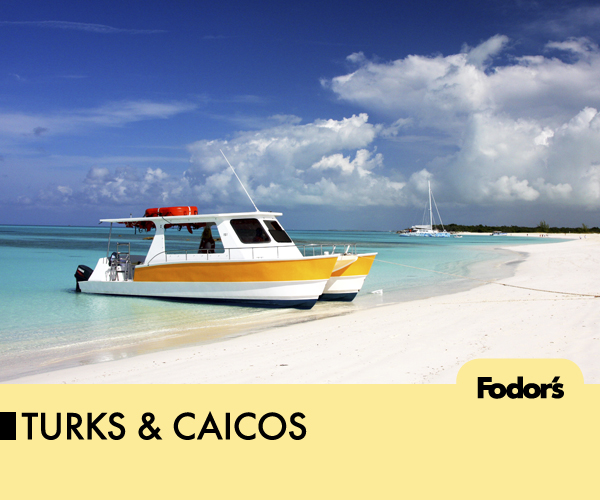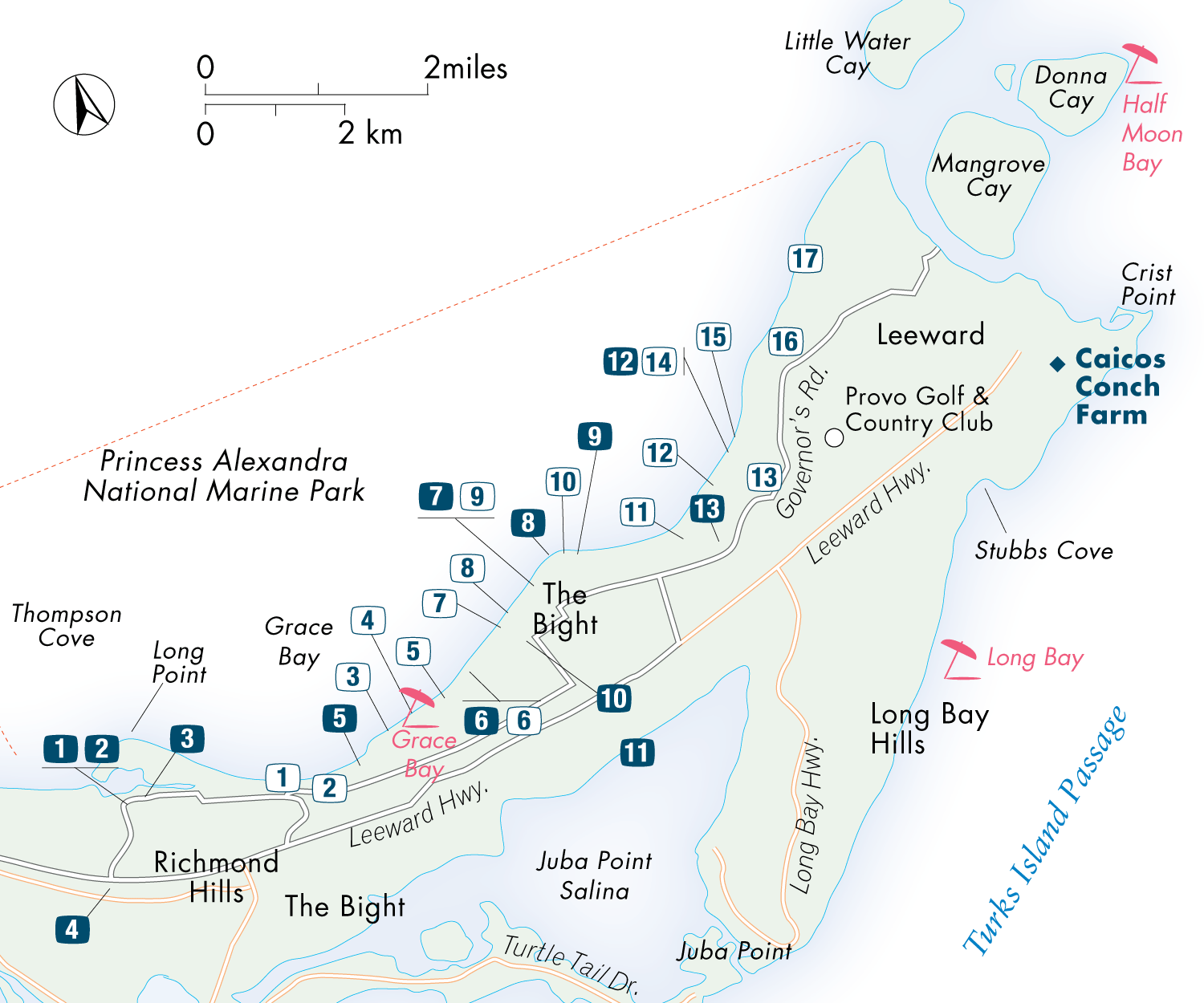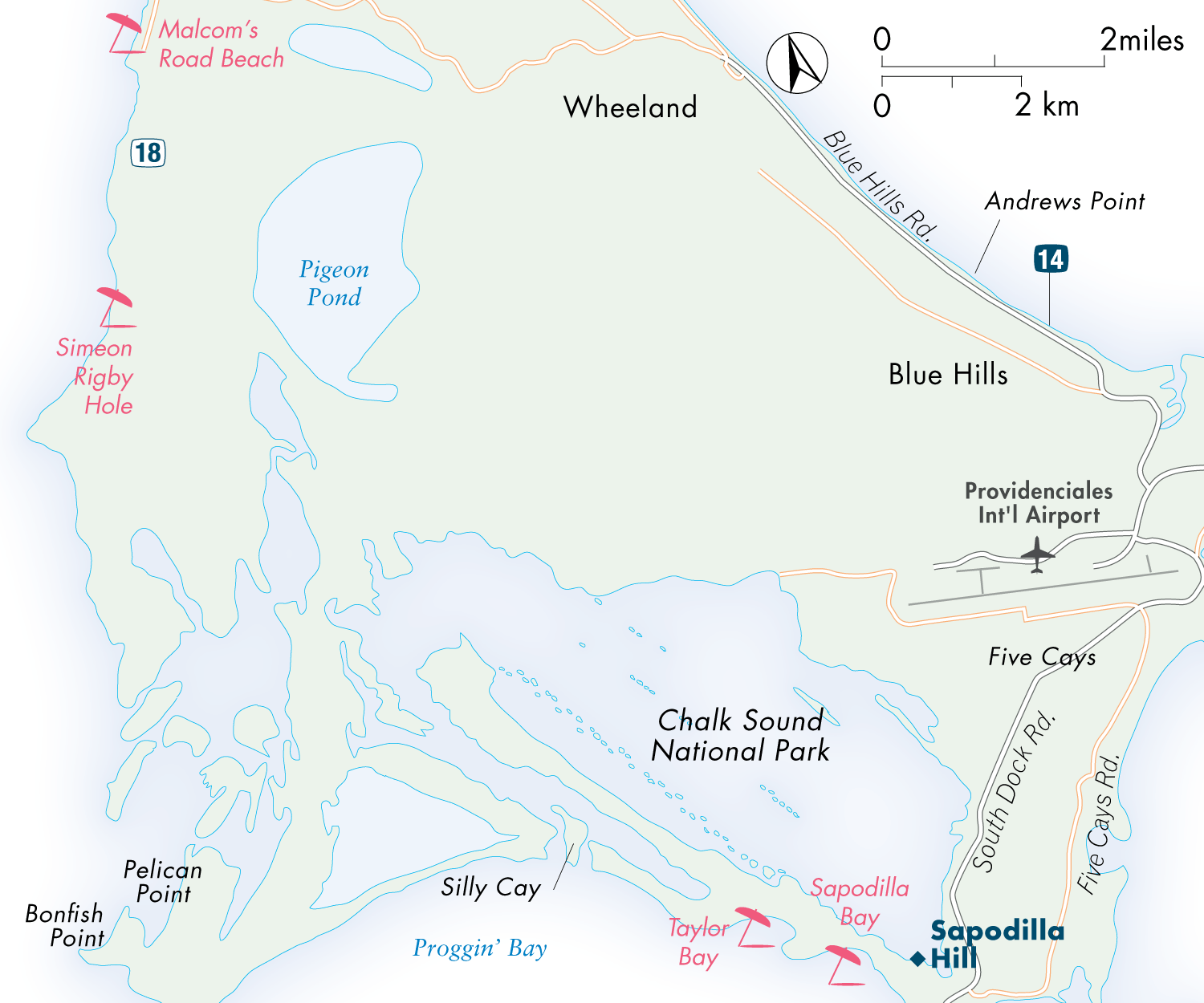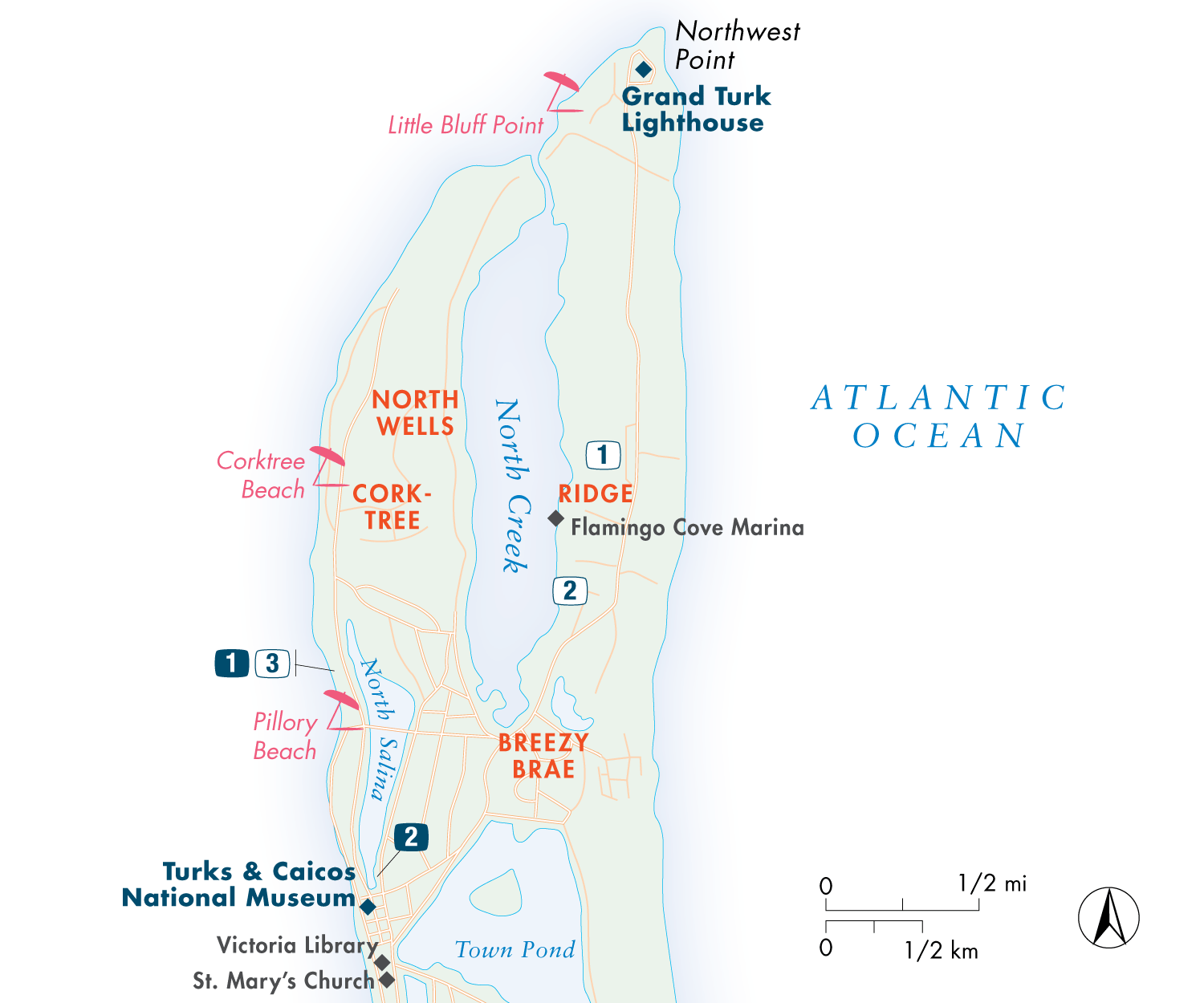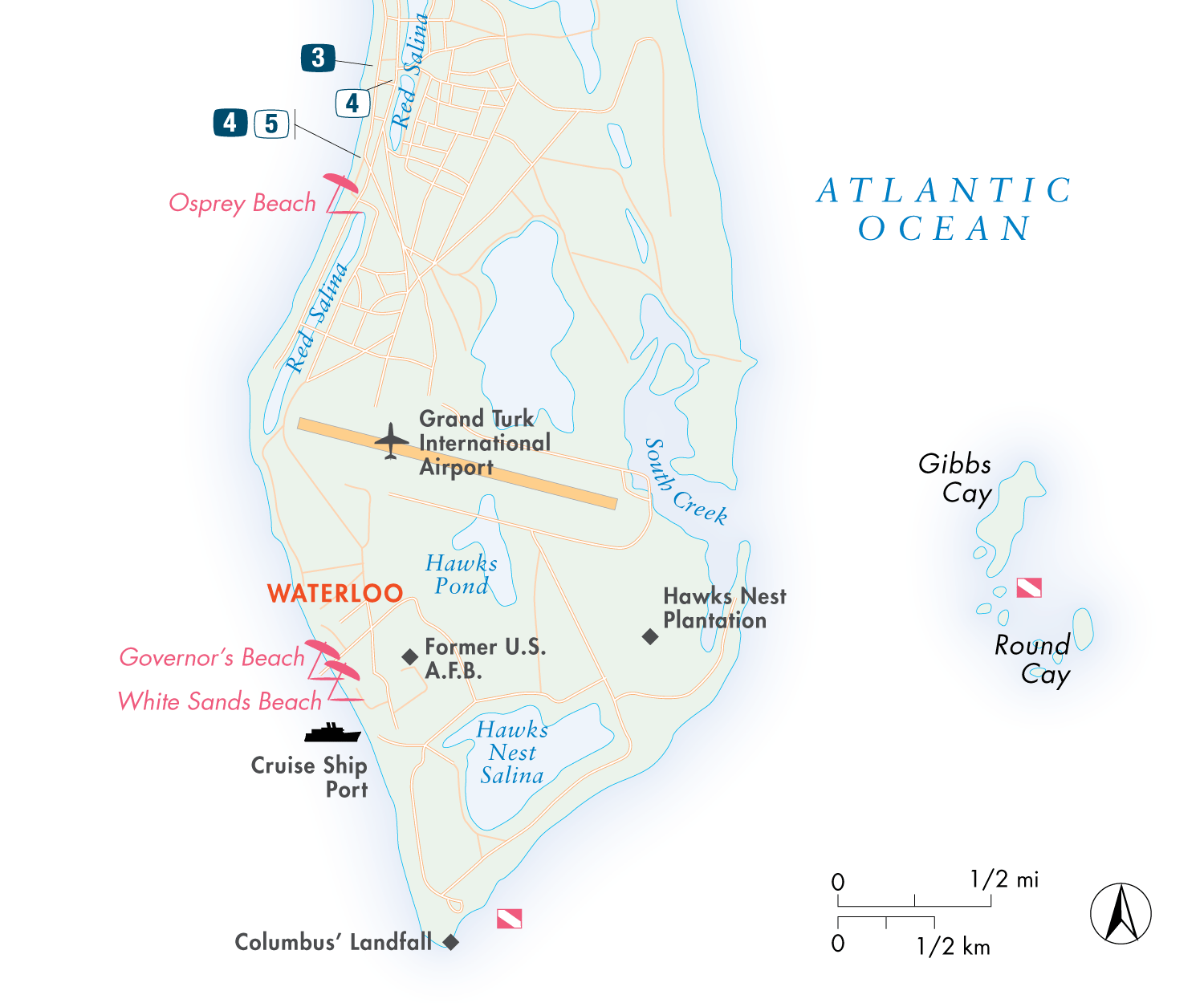WELCOME TO TURKS AND CAICOS
With water so turquoise that it glows, you may find it difficult to stray far from the beach in the Turks and Caicos. You may find no need for museums, and no desire to see ruins or even to read books. You may find yourself hypnotized by the waters many neon hues. And since the beaches are among the most incredible you will ever see, dont be surprised if you wake up on your last morning and realize that you didnt find a lot of time for anything else.
Although ivory-white, soft sandy beaches and breathtaking turquoise waters are shared among all the islands, the landscapes are a series of contrasts, from the dry, arid bush and scrub on the flat, coral islands of Grand Turk, Salt Cay, South Caicos, and Providenciales to the greener, foliage-rich undulating landscapes of Middle Caicos, North Caicos, Parrot Cay, and Pine Cay.
A much-disputed legend has it that Columbus first discovered these islands in 1492. Despite being on the map for longer than most other island groups, the Turks and Caicos Islands (pronounced kay -kos) still remain part of the less-discovered Caribbean. More than 40 islandsonly eight inhabitedmake up this self-governing British overseas territory that lies just 575 mi (925 km) southeast of Miami on the third-largest coral reef system in the world.
The political and historical capital island of the country is Grand Turk, but most of the tourism development, which consists primarily of boutique hotels and condo resorts, has occurred in Providenciales, thanks to the 12-mi (18-km) stretch of ivory sand that is Grace Bay. Once home to a population of around 500 people plus a few donkey carts, Provo has become a hub of activity, resorts, spas, restaurants, and water sports, with a population of around 25,000. Its the temporary home for the majority of visitors who come to the Turks and Caicos.
Despite the fact that most visitors land and stay in Provo, the Turks & Caicos National Museum is in the nations administrative capital, Grand Turk. The museum tells the history of the islands that have all, at one time or another, been claimed by the French, Spanish, and British as well as many pirates, long before the predominately North American visitors discovered its shores.
Marks of the countrys colonial past can be found in the wooden and stone, Bermudian-style clapboard housesoften wrapped in deep-red bougainvilleathat line the streets on the quiet islands of Grand Turk, Salt Cay, and South Caicos. Donkeys roam free in and around the salt ponds, which are a legacy from a time when residents of these island communities worked hard as both slaves and then laborers to rake salt (then known as white gold) bound for the United States and Canada. In Salt Cay the remains of wooden windmills are now home to large osprey nests. In Grand Turk and South Caicos, the crystal-edge tidal ponds are regularly visited by flocks of rose-pink flamingos hungry for the shrimp to be found in the shallow, briny waters.
Sea Island cotton, believed to be the highest quality, was produced on the Loyalist plantations in the Caicos Islands from the 1700s. The native cotton plants can still be seen dotted among the stone remains of former plantation houses in the more-fertile soils of Middle Caicos and North Caicos. Here communities in tiny settlements have retained age-old skills using fanner grasses, silver palms, and sisal to create exceptional straw baskets, bags, mats, and hats.
In all, only 25,000 people live in the Turks and Caicos Islands; more than half are Belongers, the term for the native population, mainly descended from African and Bermudian slaves who settled here beginning in the 1600s. The majority of residents work in tourism, fishing, and offshore finance, as the country is a haven for the overtaxed. Indeed, for residents and visitors, life in TCI is anything but taxing. But even though most visitors come to do nothinga specialty in the islandsit does not mean theres nothing to do.
TOP ATTRACTIONS
Even on well-developed Provo, there are still miles of deserted beaches without any footprints or beach umbrellas in sight.
The third-largest coral reef system in the world is among the worlds top dive sites.
Island-hopping beyond the beaten path will give you a feel for the past in the present.
Destination spas, penthouse suites, and exclusive villas and resorts make celebrity-spotting a popular sport.
The island chain offers excellent fishing and boating opportunities among its uninhabited coves and cays.
GETTING ORIENTED
Though Providenciales is a major offshore banking center, sea creatures far outnumber humans in this archipelago of 40 islands, where the total population is a mere 25,000. From developed Provo to sleepy Grand Turk to sleepier South Caicos, the islands offer miles of undeveloped beaches, crystal-clear water, and laid-back luxury resorts.
Restaurants
Hotels
Beaches
Restaurants
Hotels
Beaches
Hotels
Restaurants
Hotels
Beaches
Restaurants
Hotels
Beaches


